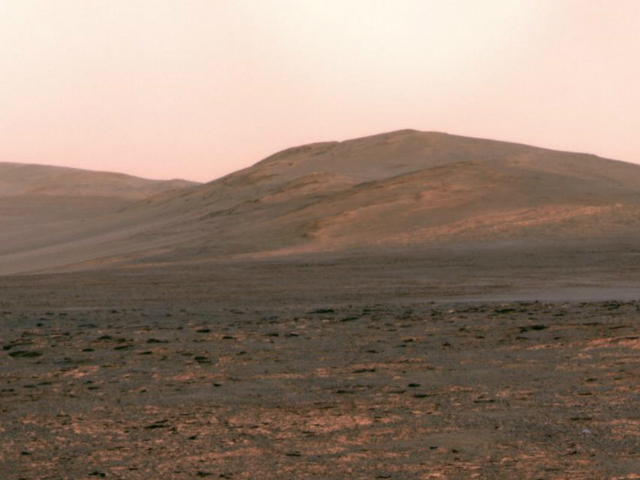Filtered By: Scitech
SciTech
'Fossilized' Martian soil hints at signs of life

Here's more possible evidence that there was, and may still be, life on Mars.
Recent images from the "Curiosity" rover that roamed the Martian landscape show Earth-like soil profiles comparable to those in Antarctic Dry Valleys and Chile's Atacama Desert, Oregon geologist Gregory Retallack said.
According to Retallack—who studied mineral and chemical data published by researchers closely tied with the Curiosity mission—the soil deep in a crater dating some 3.7 billion years back may contain evidence that Mars was once much "warmer and wetter."
"The pictures were the first clue, but then all the data really nailed it... The key to this discovery has been the superb chemical and mineral analytical capability of the Curiosity Rover, which is an order of magnitude improvement over earlier generations of rovers," he said.
He added the new data showed "clear chemical weathering trends, and clay accumulation at the expense of the mineral olivine, as expected in soils on Earth."
"Phosphorus depletion within the profiles is especially tantalizing, because it attributed to microbial activity on Earth," he said.
Retallack, a professor of geological sciences and co-director of paleontology research at the University of Oregon Museum of Natural and Cultural History, is an internationally known expert on the recognition of paleosols, or ancient fossilized soils contained in rocks.
Ancient soils
While Retallack said the ancient soils do not prove that Mars once contained life, they add to growing evidence that Mars was much wetter and warmer - and more habitable in the past three billion years.
On the other hand, Retallack said new missions will be needed to explore older and more clayey terrains as "Curiosity" is now exploring topographically higher and geologically younger layers within the crater.
In these areas, soils appear less conducive to life.
Meanwhile, surface cracks in deeply buried soils suggest typical soil clods. Retallack said vesicular hollows, or rounded holes, and sulfate concentrations, are features of desert soils on Earth.
"None of these features is seen in younger surface soils of Mars. The exploration of Mars, like that of other planetary bodies, commonly turns up unexpected discoveries, but it is equally unexpected to discover such familiar ground," he said.
Meanwhile, Malcolm Walter of the Australian Centre for Astrobiology, who was not involved in the research, said the potential discovery of fossilized soils in the Gale Crater increases the chance that Mars has microbes.
"There is a real possibility that there is or was life on Mars," he said.
Retallack also noted Steven Benner of the Westheimer Institute of Science and Technology in Florida had speculated that life is more likely to have originated on a soil planet like Mars than a water planet like Earth.
Benner, in an email, said Retallack's paper "shows not only soils that might be direct products of an early Martian life, but also the wet-dry cycles that many models require for the emergence of life." — Joel Locsin/TJD, GMA News
Tags: mars, extraterrestriallife
More Videos
Most Popular



